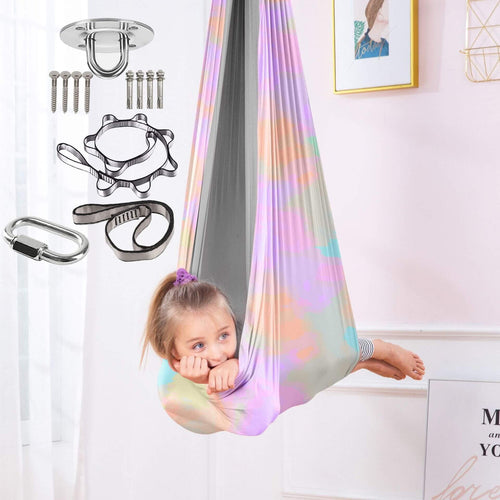Sensory Swings for Adults: A Comprehensive Guide to Therapeutic Benefits
Introduction
Navigating the complexities of adulthood can be challenging, especially for individuals with sensory processing disorders. One tool that has proven to be incredibly beneficial in this journey is the sensory swing. This article aims to provide a comprehensive guide on the therapeutic benefits of sensory swings for adults.
Understanding Sensory Processing Disorders in Adults
Sensory Processing Disorder (SPD) is a condition where the brain has trouble receiving and responding to information that comes in through the senses. Adults with SPD may be oversensitive or undersensitive to physical stimuli, leading to a range of symptoms such as difficulty performing everyday tasks, clumsiness, behavioral problems, anxiety, and depression. Understanding SPD is the first step towards finding effective tools and strategies to manage it.

The Role of Sensory Swings in Therapy
Sensory swings are therapeutic tools often used in occupational therapy to help individuals with SPD, including adults with autism. These swings provide a safe, controlled sensory input that can help individuals self-regulate their emotions and behaviors. They are designed to provide vestibular input, which is one of our body’s senses responsible for balance and spatial orientation.

The Science Behind Sensory Swings
The science behind sensory swings lies in the way they provide vestibular and proprioceptive input. The swinging motion stimulates the vestibular system, which is responsible for our sense of balance and spatial orientation. The pressure provided by the swing stimulates the proprioceptive system, which tells us where our body is in space. This combination of inputs can help regulate the sensory system, leading to improvements in various areas.

Benefits of Sensory Swings for Adults
Sensory swings offer a multitude of benefits for adults with autism. They can help improve balance and coordination, develop motor skills, and provide a sense of comfort and security. Most importantly, they can help adults with autism better process sensory information, leading to improvements in daily functioning and quality of life.

Choosing the Right Sensory Swing
Choosing the right sensory swing involves considering the individual’s sensory needs, the type of swing, and safety factors. Sensory swings come in various types, including platform swings, therapy swings, and hammock swings, each offering different types of sensory input. Safety is also a crucial factor, with considerations such as weight limit, ease of installation, and durability playing a role in the decision.
Our Sensory Swing Selection at Sensory Harbor
At Sensory Harbor, we offer a variety of sensory swings designed to meet the unique needs of adults with autism. From platform swings to therapy swings, our selection caters to different sensory needs, ensuring that every individual can find a swing that suits them.

Hear From Our Happy Customers
Don’t just take our word for it - hear from our satisfied customers! Adults with autism and their families have shared heartwarming stories about how our sensory swings have made a positive impact on their lives.
Conclusion
Sensory swings are more than just a fun activity - they’re a powerful tool that can help adults with autism lead happier, more comfortable lives. Explore our selection at Sensory Harbor today and discover the transformative power of sensory swings.
Call to Action
We encourage you to browse the selection of sensory swings on our website, Sensory Harbor. We invite you to share your own experiences or ask questions in the comments section below. Let’s embark on this journey together.
Please note that the numbers in square brackets are placeholders for references that should be included to provide a source for the information. It’s always important to cite sources when making scientific or health-related claims.







